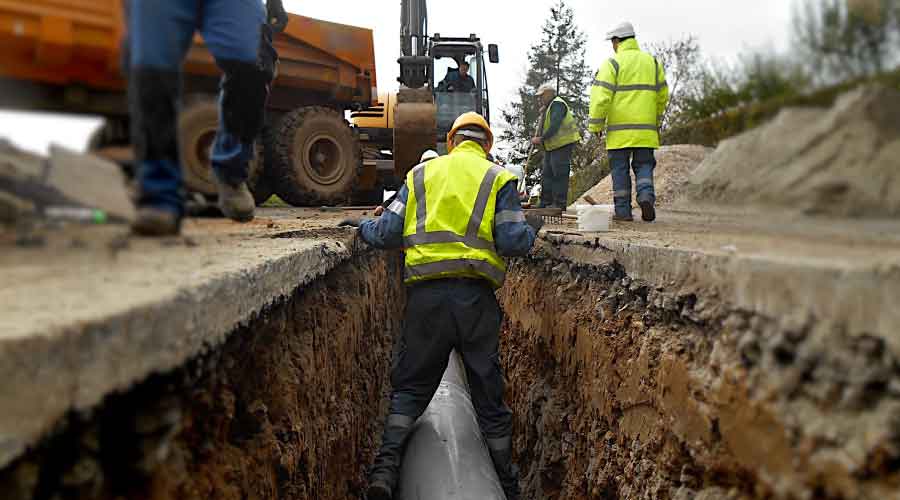
OSHA Spotlights Threats to Workers from Trenching
After charting an alarming 22 trenching deaths the first half of 2022, OSHA has made trench safety a national emphasis on inspections. November 23, 2022
By Dan Hounsell, Senior Editor
From proper equipment training to personal protection equipment and electrical hazards, workplace safety threats are a high priority for maintenance and engineering managers. These and other issues also are high priorities for the U.S. Occupational Safety & Health Administration (OSHA), which is responsible for identifying the most critical threats to workers.
To that end, after charting an alarming 22 trenching deaths the first half of 2022, OSHA has made trench safety a national emphasis on inspections. The agency recently launched enhanced enforcement initiatives with a goal of protecting workers from known hazards. Industry professional associations support the move.
OSHA called on employers engaged in trenching and excavation activities to act immediately "to ensure that required protections are fully in place every single time their employees step down into or work near a trench."
In a matter of seconds, workers can be buried under thousands of pounds of soil and rocks in an unsafe trench, says Doug Parker, assistant secretary for occupational safety and health. He wants to stop the increase in the number of workers needlessly dying and suffering serious injuries in trenching incidents.
The agency reported that 22 deaths in the first half of 2022 surpasses the total of 15 in 2021. In June, two workers aged 20 and 39 died in Jarrell, Texas, when the unprotected trench more than 20 feet deep collapsed upon them as they worked. OSHA noted that trench shields sat unused beside the excavation. This incident prompted the agency to announce the enhancements.
To stress the dangers of disregarding federal workplace safety requirements, OSHA enforcement staff will consider every available tool at the agency's disposal. OSHA compliance officers will perform trench inspections nationwide and might inspect any excavation site during their daily duties.
OSHA lists steps managers can take to keep excavation work safe:
- Ensure there is a safe way to enter and exit the trench.
- Trenches must have cave-in protection, and remember to slope, shore, shield.
- Keep materials away from the edge of the trench.
- Look for standing water or other environmental hazards.
- Never enter a trench unless it is properly inspected.
Dan Hounsell is senior editor of the facilities market. He has more than 25 years of experience writing about facilities maintenance, engineering and management.
Next
Read next on FacilitiesNet












